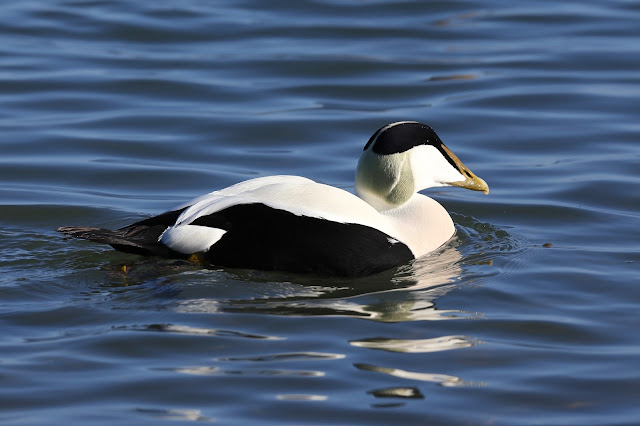These, I think, are first year males just starting to develop some of their adult plumage.
Here are male, female and youngster.
While I was watching, the male birds were spending a lot of time and effort trying to impress the females. The male does this by swimming in front of a female, shaking his head from side to side and then throwing his head back and making a lovely cooing sound. The female sometimes responds with a grunt but whether in approval or disapproval is hard to say.
The eider's scientific name is Somateria mollissima, somateria meaning wool-bodied, and mollisima meaning softest. The females line their nests with their own feathers which were (and are) collected to make eiderdown. The French name for the common eider is "eider à duvet", duvet in French meaning down.
Here in the North East of England we are at the southern limit of the eider's breeding range, as shown on BTO BirdAtlas maps and the EBCC distribution map. Some birds move a little farther south in winter.
The common eider is also widespread in North America and was painted by John J Audubon. You can read his account of the eider here.
Thomas Bewick also drew the common eider (a male) for his A History of British Birds (1832).
Eiders make a lovely cooing sound which you can hear here. Listen to Chris Watson's BBC Radio 4 Tweet of the Day on eider ducks here. And watch a short RSPB video here.






















No comments:
Post a Comment